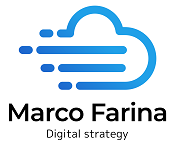Form processing is a critical business process that involves capturing data from physical and digital forms, extracting information, and automating workflows. This process can be time-consuming, error-prone, and resource-intensive if done manually, which is why many organizations are turning to automated form processing solutions to streamline their operations.
Microsoft has developed a form processing solution called Azure Form Recognizer, which uses machine learning to automatically extract information from forms, receipts, and invoices. In this article, we’ll take a closer look at Azure Form Recognizer and explore how it can benefit businesses of all sizes.
What is Azure Form Recognizer?
Azure Form Recognizer is a cloud-based service that leverages machine learning to extract data from forms and other types of documents. It uses advanced optical character recognition (OCR) and natural language processing (NLP) algorithms to automatically identify and extract key fields, such as names, addresses, dates, and amounts.
With Azure Form Recognizer, businesses can easily digitize their paper-based forms and automate their workflows, saving time and reducing errors. The service is highly scalable and can handle large volumes of documents, making it ideal for businesses of all sizes.
How does Azure Form Recognizer work?
Azure Form Recognizer uses a three-step process to extract data from forms:
-
Training: The first step is to train the machine learning model using sample forms. Businesses can provide sample forms that are representative of the types of documents they will be processing, and Azure Form Recognizer will use these forms to learn how to identify and extract data.
-
Extraction: Once the model has been trained, it can be used to extract data from new forms. Users simply upload their forms to Azure Form Recognizer, and the service will automatically identify and extract the relevant data.
-
Verification: The final step is to verify the accuracy of the extracted data. Azure Form Recognizer provides a user interface that allows users to review the extracted data and make any necessary corrections. Users can also provide feedback to the machine learning model to help improve its accuracy over time.
What are the benefits of Azure Form Recognizer?
There are many benefits to using Azure Form Recognizer for form processing. Here are just a few:
-
Increased efficiency: Azure Form Recognizer can automate the form processing workflow, reducing the need for manual data entry and saving businesses time and resources.
-
Improved accuracy: The machine learning algorithms used by Azure Form Recognizer are highly accurate, reducing errors and improving data quality.
-
Scalability: Azure Form Recognizer can handle large volumes of forms, making it ideal for businesses with high document processing requirements.
-
Flexibility: Azure Form Recognizer can be used to process a wide variety of forms, including receipts, invoices, and surveys.
-
Cost-effective: Azure Form Recognizer is a cloud-based service, meaning that businesses only pay for the resources they use. This makes it a cost-effective solution for form processing.
How can businesses use Azure Form Recognizer?
Azure Form Recognizer can be used in a wide variety of industries and use cases. Here are just a few examples:
-
Healthcare: Healthcare organizations can use Azure Form Recognizer to digitize patient forms, such as intake forms and medical history forms.
-
Retail: Retail businesses can use Azure Form Recognizer to automate the processing of receipts and invoices, reducing the need for manual data entry.
-
Finance: Financial institutions can use Azure Form Recognizer to process loan applications, credit card applications, and other forms.
-
Government: Government agencies can use Azure Form Recognizer to digitize forms such as tax returns, permits, and licenses.
-
Education: Educational institutions can use Azure Form Recognizer to process student registration forms, transcripts, and financial aid applications.

